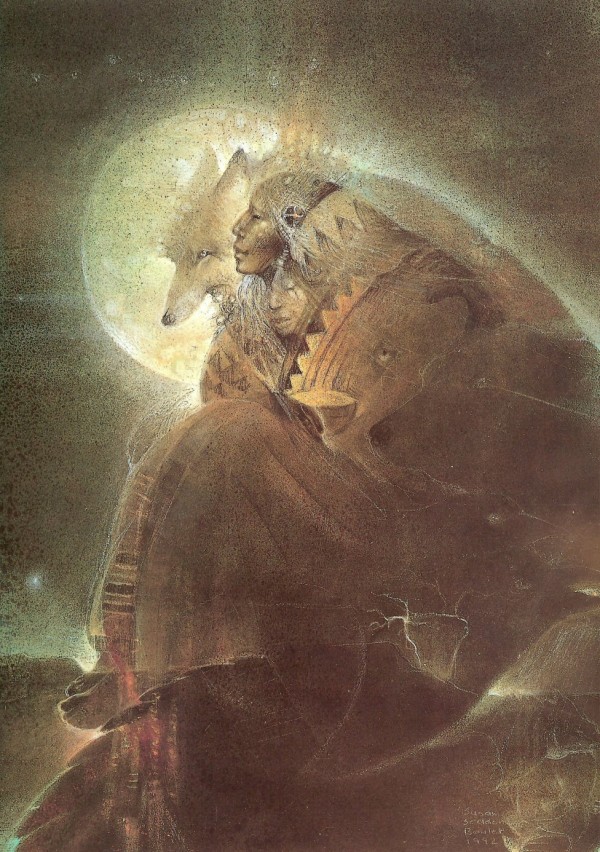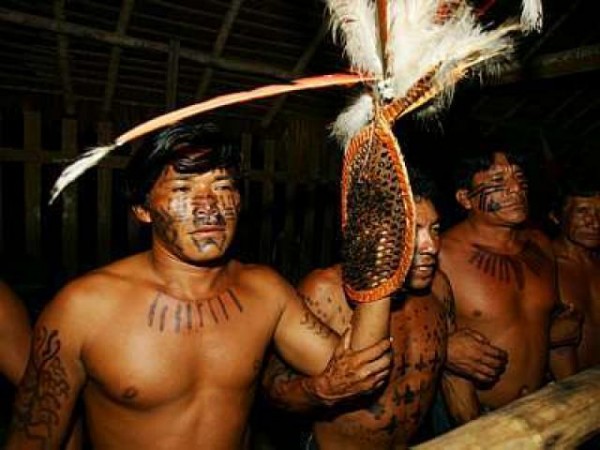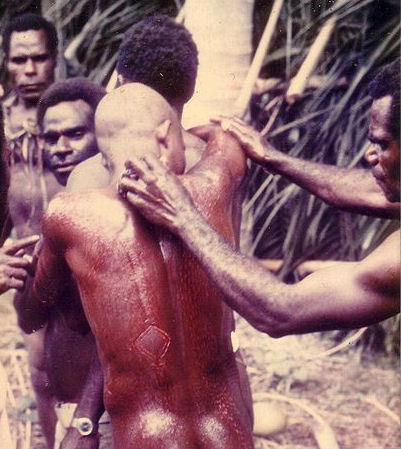Every area of the world has some form of coming of age ritual or rites of passage. Whether it’s adolescent circumcision, Bar Mitzvah, or the Japanese Coming of Age Day—the crossing between being a child and an adult is marked in some way. Many cultures (and sub-cultures) have found a variety of ways to welcome their members into adulthood. Some are embarrassing, others are excruciatingly painful, but they are all unique in their own way.
10. Fraternity Pledging

More often than not, the act of pledging to a fraternity is an exercise of seeing how stupid the future intellects of the world can act. We’ve seen the practice both glorified and vilified in pop movies such as Animal House, Dazed and Confused, and Old School. Students have long been kidnapped, paddled, and/or forced into compromising situations. As frats look for new ways of upping the ante when it comes to abusing and embarrassing pledges, more stories of pledging gone awry have graced news outlets. As often as not, alcohol has proved to be a fatal accomplice in these happenings.
9. Russefeiring

In the USA, recent high school graduates pack copious amounts of hedonism into one night: the prom. For their Norwegian counterparts, they feel 17 days are needed to sow their wild oats properly. In addition, they find waiting for the end of the school year unnecessary. Russefeiring takes place in May during the spring semester. The revelry is also almost exceedingly patriotic, the Russ (or the people taking part in the festivities) don some form of red and parade about the streets. Their Viking ancestors would wipe tears from their eyes if they knew how public disturbances and drunkenness are still Norway’s time honored traditions.
8. Poy Sang Long

Not all young adults need to punish their livers in order to feel like grownups. The Shan people of Burma (Myanmar) and Northern Thailand have made it cool to do the exact opposite. Poy Sang Long is a rite of passage that turns to Buddha in search of enlightenment and maturity. Usually for a period of weeks or months, groups of male children aged 7-14 take holy vows and experience monastic life. The initiation ceremony itself lasts 3 days, during which the initiates dress up as Buddha and are carried around on the shoulders of the male elders of their respective families. After the ceremony, the initiates stay with the monastery for an undetermined amount of time. For some rare cases, the initiates might even stay for years.
7. Walkabout

Perhaps one of the most recognizable by name ritual, a walkabout is one of the most important, enduring facets of Australian Aboriginal culture. There is no exact age set on this venture, but at some point Aboriginal males set off into the bush to experience their traditional ways of hunting and living. A walkabout will often span a period of months up to a half of year. This venture often occurs in between life changing events such as in between employment or other opportunities to break from modern society. This rite of passage has become more crucial to safeguarding Aboriginal culture as these natives are forced further into an uncompromisingly modernized western world.
6. Crossing of the Equator

During line-crossing, Equatorial Baptism, or whatever it is called, navies around the world are subjecting sailors to a multitude of differing hazes and shenanigans. The ritual, often overseen by a costumed King Neptune, victimizes sailors who are crossing the equator for the first time. The rites may differ per ship, but often includes the repeated dunking (or baptizing) of sailors into the sea. Equatorial celebrations have become so popular that many commercial cruise lines also work in variations (although they will often use a pool instead of the ocean, for lawful reasons).
5. Vision Quest

There are many differing versions of the vision quest depending on which Native American tribe you ask. Generally, the ritual takes place for four cycles of day and night. During this time, the aspiring youngster looks to discover his place in the natural order as well as in society. The initiate will often starve and/or deprive themselves of sleep during this period of time in search of a closer spiritual connection to the nature around him/her. Other deviations of the vision quest include the consumption of hallucinogenic plants and sitting stationary for long periods of time in an enclosed space.
4. Maasai Lion Hunt

This is one ritual that could be potentially more painful than the repeated stings of bullet ants. If all goes well, the initiate will have killed a male lion and have secured a prestigious place among his tribe. If fate delivers a bad stroke of luck, than the male lion will have a meaty lunch with leftovers to spare. The value that the Maasai places on the killing of lions (not to mention their ongoing practice of female circumcision) has led to the increasing intervention of outsiders. Often indigenous tribes are left to their traditions, but the decreasing population of lions has led to other solutions being sought such as compensating for lost live stock in exchange for sparing a lion’s life.
3. Bullet Ants

The Sateré-Mawé bullet ant ritual is by far the most consistently painful ritual on this list. So then why is it that this tribe of 10,000+ seemingly intelligent members (the first people in the world to cultivate guarana) subjects their men to excruciating pain? They intentionally cover their hands in an ant whose sting feels like being gunshot over and over again for 24 hours. The ants are drugged into a stupor and carefully interwoven into makeshift gloves. Once these buggers are woken up they go to work terrorizing the hands of aspiring warriors. This ritual has to be repeated a terrible 20 times before a boy can call himself a man. In the macho category, the bullet ant ritual destroys the closest competition western culture has to offer: “Edward Fortyhands”.
2. Blood Initiation

Deep in the Highlands of Papua New Guinea, a remote people practice a rite of passage referred to as a blood initiation. This ritual dates back to pre-colonial times, when tribal warfare and cannibalism was commonplace. Through bloodletting, these men let loose the female blood of their mothers in order to become fully man. After washing in a nearby creek, elders and initiates alike shove several feet of a local plant down their throats to make them vomit repeatedly. Sharp reeds are then pushed into the initiate’s nostrils—the blood and mucus bursting forth represents the expulsing of airborne contaminants. As if they haven’t cleared enough gunk out of their system, they use a small arrow to pierce and let blood out of their tongues. This final stage represents cleansing the female presence out of their mouth. Luckily, these tribes have chosen to overlook the one piece of male anatomy most familiar with female anatomy.
1. Crocodile Scars

Papua New Guinea is a place known for its variety of methods to torture young men into adulthood. For this reason, it is the only nation that has two entries on this list. Scarification has long been a rival to tattooing when it comes to adorning the skin of indigenous Pacific Islanders. Scarification is often considered the mark of a man while more importantly serves to attract females. For some tribes in Papua New Guinea, a figurative crocodile swallows males as boys and regurgitates them as men. In reality, older men of the village use sharp instruments to make mincemeat of the skin. The process rivals the bullet ant ritual when it comes to shear pain and surpasses it when it comes to invasiveness of the body. The end effect is an intricate patchwork of scarred skin that resembles the outer layer of a crocodile.